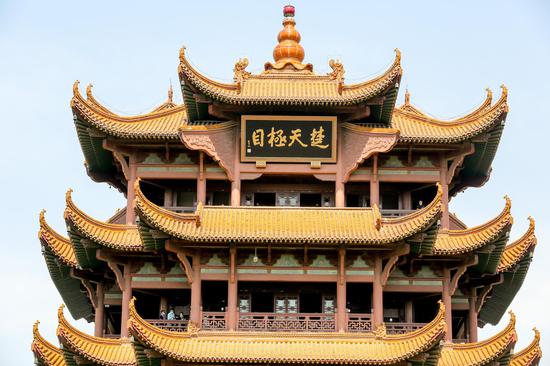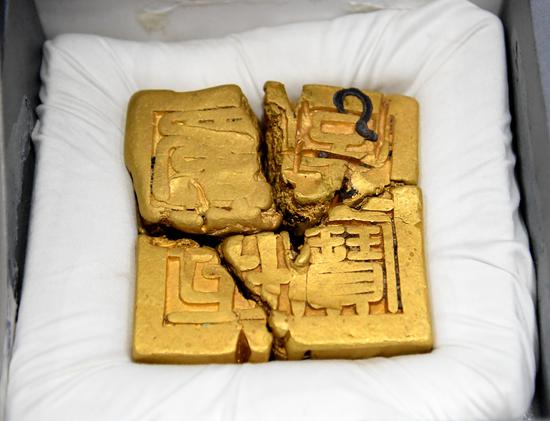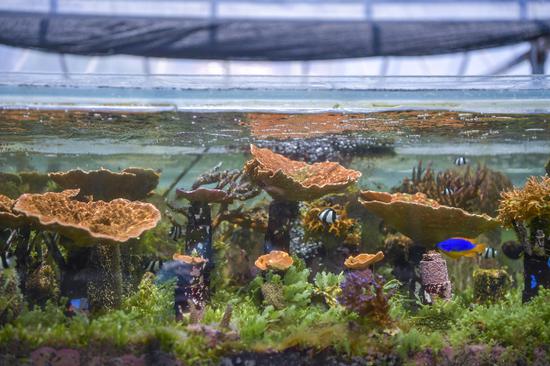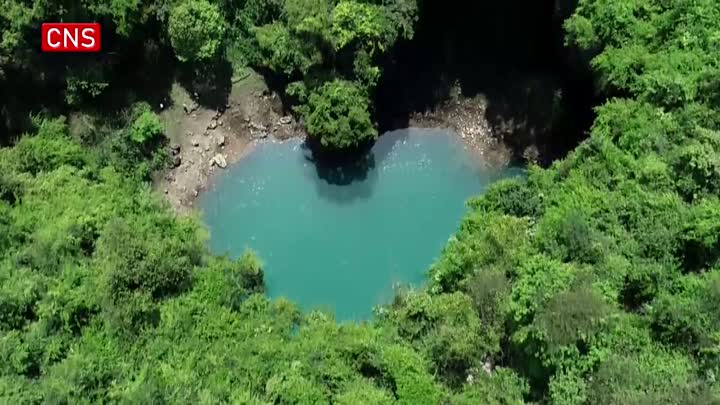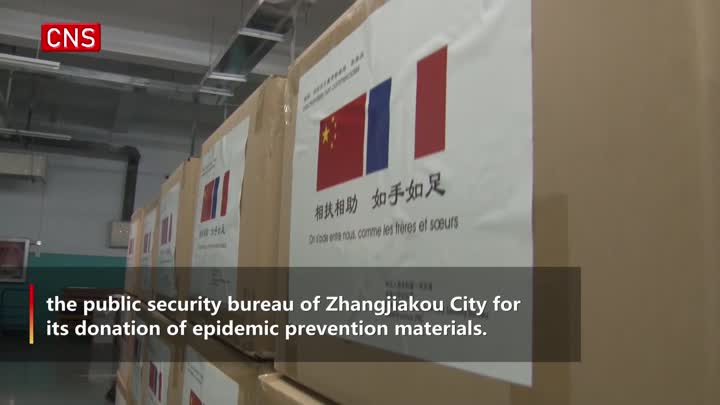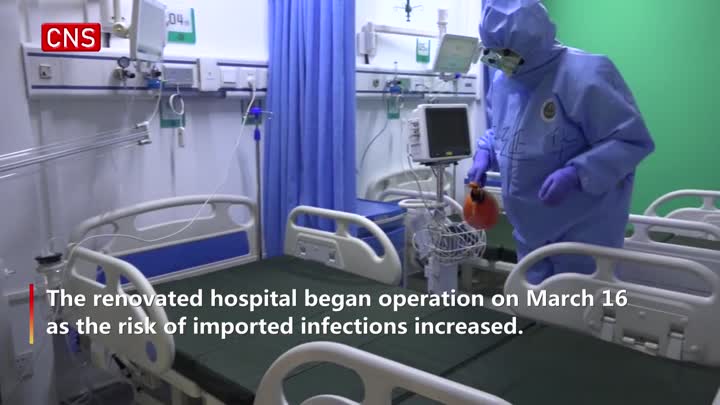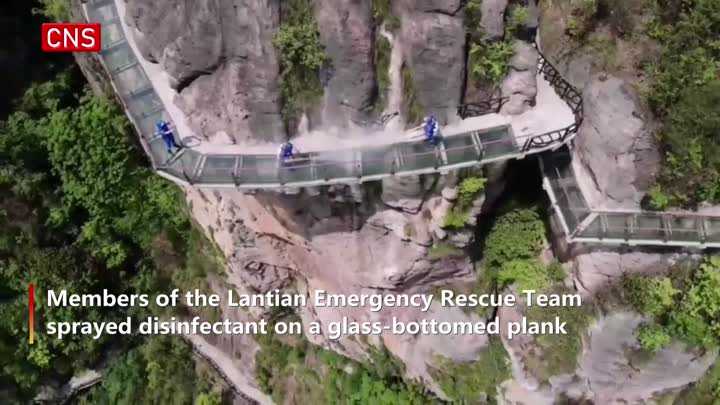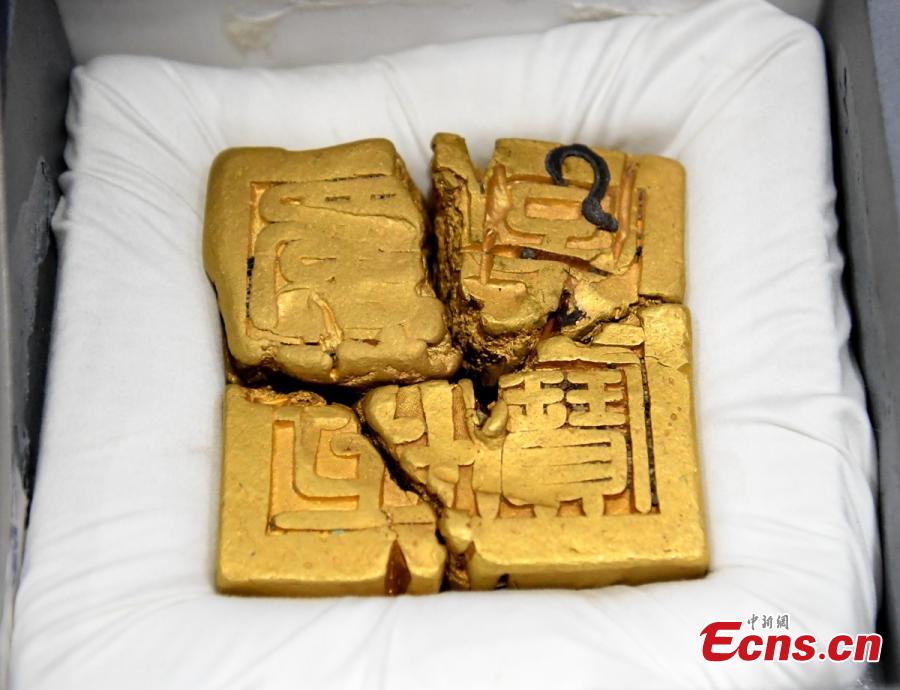
Cultural relics were displayed on a press conference, which was held to present the latest excavation results of the third phase of the archaeological excavation in the late Ming battlefield site in Pengshan County, Jiangkou Town, Sichuan province, April 29, 2020. The excavation unearthed more than 10,000 cultural relics, 2,000 pieces of those being extremely exquisite. (Photo: China News Service/Liu Zhongjun)
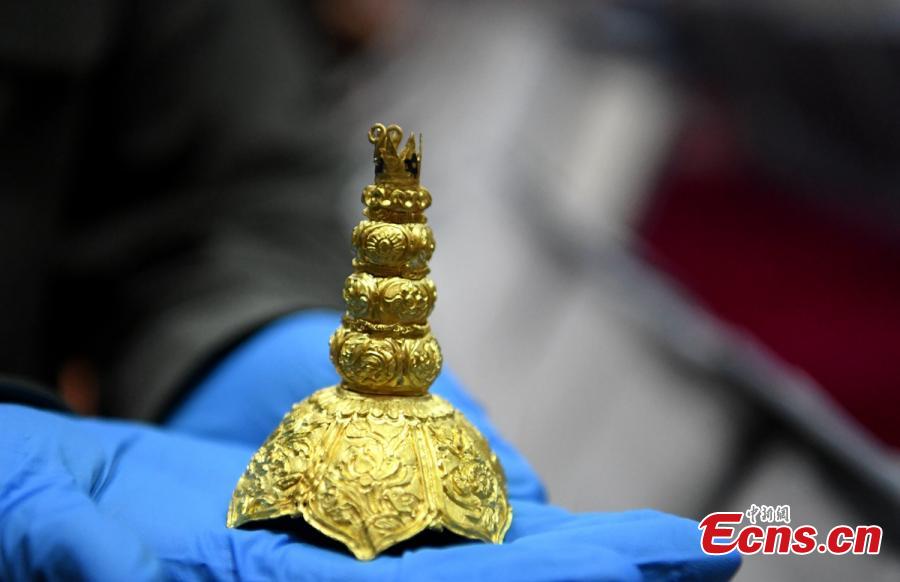
Cultural relics were displayed on a press conference, which was held to present the latest excavation results of the third phase of the archaeological excavation in the late Ming battlefield site in Pengshan County, Jiangkou Town, Sichuan province, April 29, 2020. The excavation unearthed more than 10,000 cultural relics, 2,000 pieces of those being extremely exquisite. (Photo: China News Service/Liu Zhongjun)

Cultural relics were displayed on a press conference, which was held to present the latest excavation results of the third phase of the archaeological excavation in the late Ming battlefield site in Pengshan County, Jiangkou Town, Sichuan province, April 29, 2020. The excavation unearthed more than 10,000 cultural relics, 2,000 pieces of those being extremely exquisite. (Photo: China News Service/Liu Zhongjun)

Cultural relics were displayed on a press conference, which was held to present the latest excavation results of the third phase of the archaeological excavation in the late Ming battlefield site in Pengshan County, Jiangkou Town, Sichuan province, April 29, 2020. The excavation unearthed more than 10,000 cultural relics, 2,000 pieces of those being extremely exquisite. (Photo: China News Service/Liu Zhongjun)
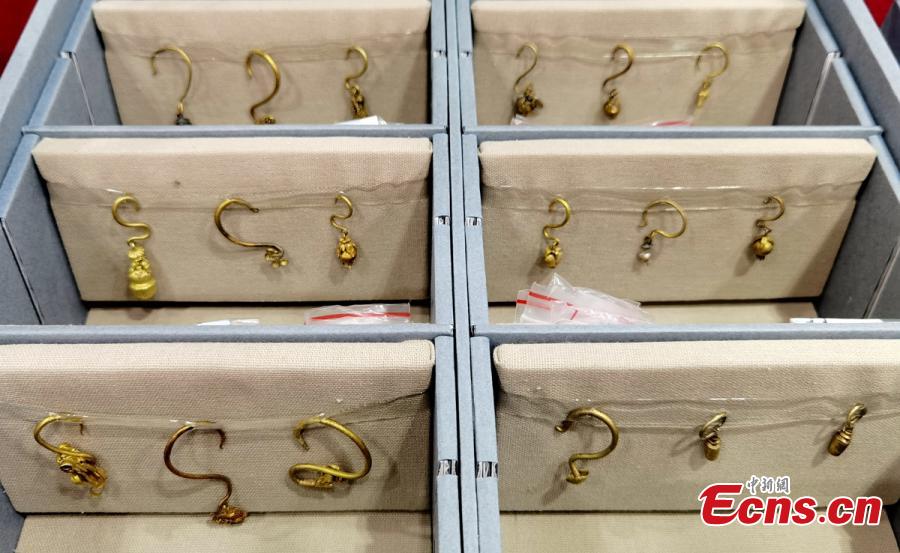
Cultural relics were displayed on a press conference, which was held to present the latest excavation results of the third phase of the archaeological excavation in the late Ming battlefield site in Pengshan County, Jiangkou Town, Sichuan province, April 29, 2020. The excavation unearthed more than 10,000 cultural relics, 2,000 pieces of those being extremely exquisite. (Photo: China News Service/Liu Zhongjun)
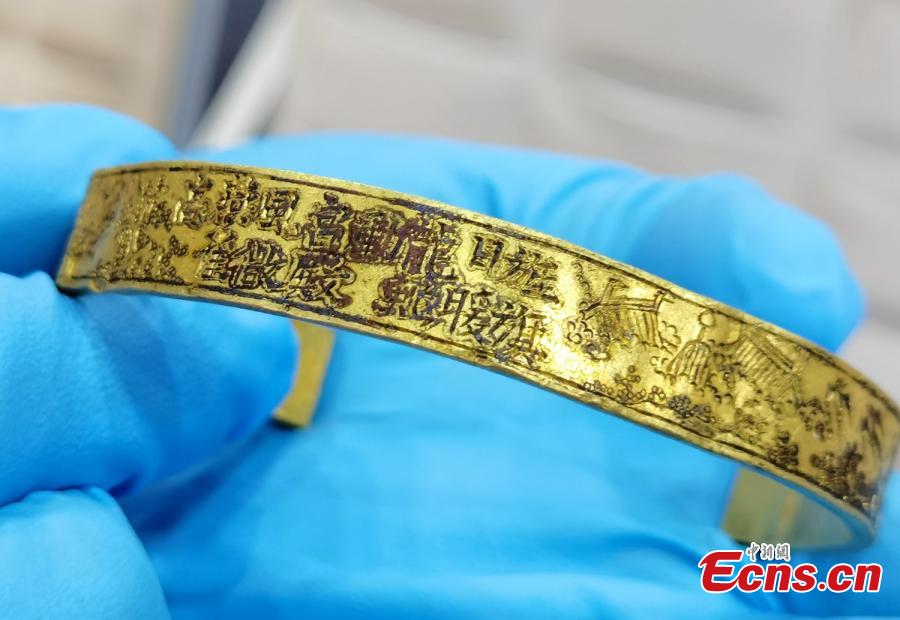
Cultural relics were displayed on a press conference, which was held to present the latest excavation results of the third phase of the archaeological excavation in the late Ming battlefield site in Pengshan County, Jiangkou Town, Sichuan province, April 29, 2020. The excavation unearthed more than 10,000 cultural relics, 2,000 pieces of those being extremely exquisite. (Photo: China News Service/Liu Zhongjun)
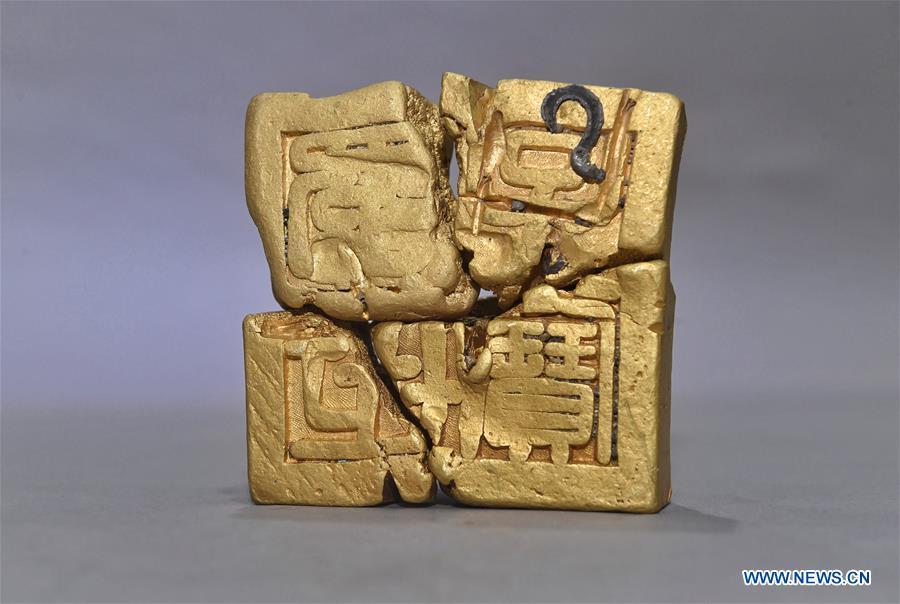
Photo taken on April 15, 2020 shows a golden seal excavated from the Jiangkou stretch of the Minjiang River in Meishan City, southwest China's Sichuan Province. More than 10,000 relics, mainly gold and silver ware, have been excavated from the Jiangkou stretch of the Minjiang River, local authorities said on Wednesday. The site which dates back to the end of the Ming Dynasty (1368-1644) was listed as one of "China's top 10 archaeological discoveries in 2017". (Xinhua/Liu Kun)
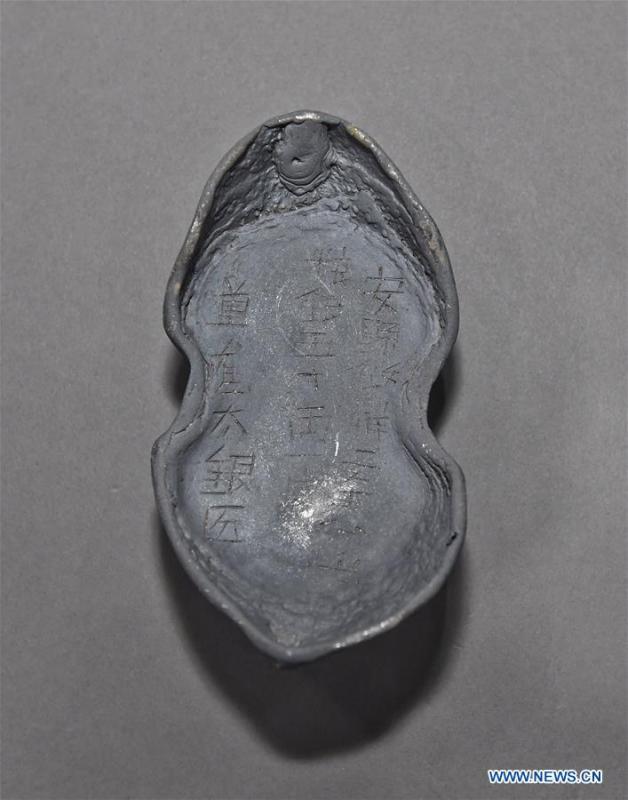
Photo taken on April 15, 2020 shows a silver ingot excavated from the Jiangkou stretch of the Minjiang River in Meishan City, southwest China's Sichuan Province. More than 10,000 relics, mainly gold and silver ware, have been excavated from the Jiangkou stretch of the Minjiang River, local authorities said on Wednesday. The site which dates back to the end of the Ming Dynasty (1368-1644) was listed as one of "China's top 10 archaeological discoveries in 2017". (Xinhua/Liu Kun)
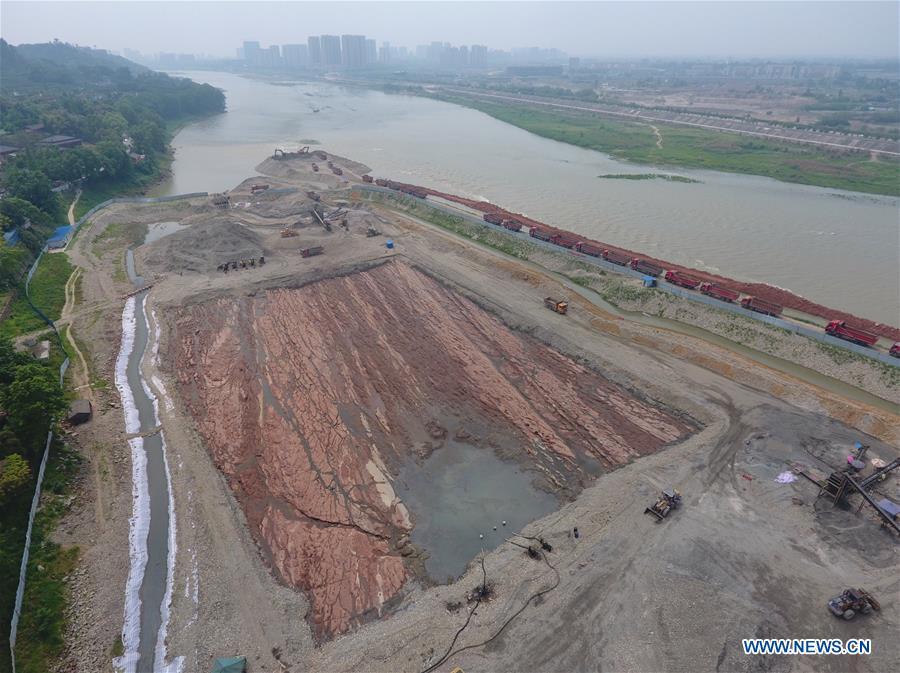
Aerial photo shows the excavation site of the Jiangkou stretch of the Minjiang River in Meishan City, southwest China's Sichuan Province, April 15, 2020. More than 10,000 relics, mainly gold and silver ware, have been excavated from the Jiangkou stretch of the Minjiang River, local authorities said on Wednesday. The site which dates back to the end of the Ming Dynasty (1368-1644) was listed as one of "China's top 10 archaeological discoveries in 2017". (Xinhua/Liu Kun)
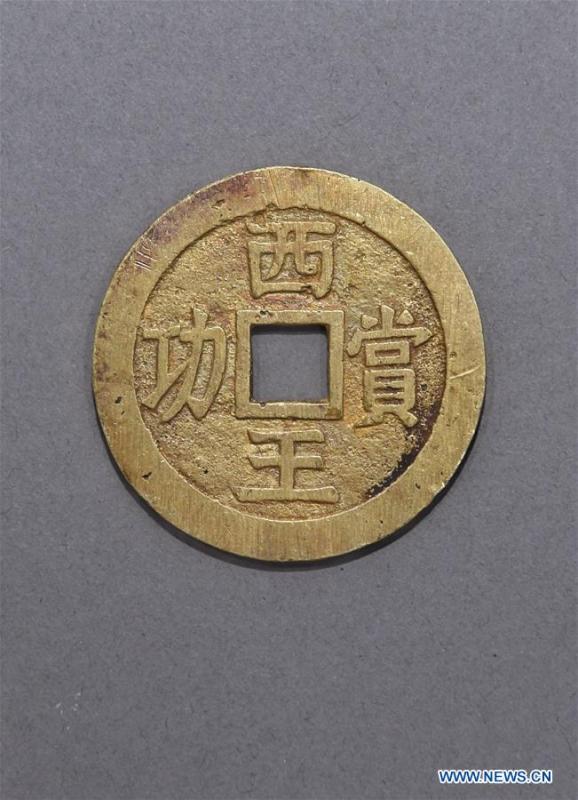
Photo taken on April 15, 2020 shows a gold coin excavated from the Jiangkou stretch of the Minjiang River in Meishan City, southwest China's Sichuan Province. More than 10,000 relics, mainly gold and silver ware, have been excavated from the Jiangkou stretch of the Minjiang River, local authorities said on Wednesday. The site which dates back to the end of the Ming Dynasty (1368-1644) was listed as one of "China's top 10 archaeological discoveries in 2017". (Xinhua/Liu Kun)
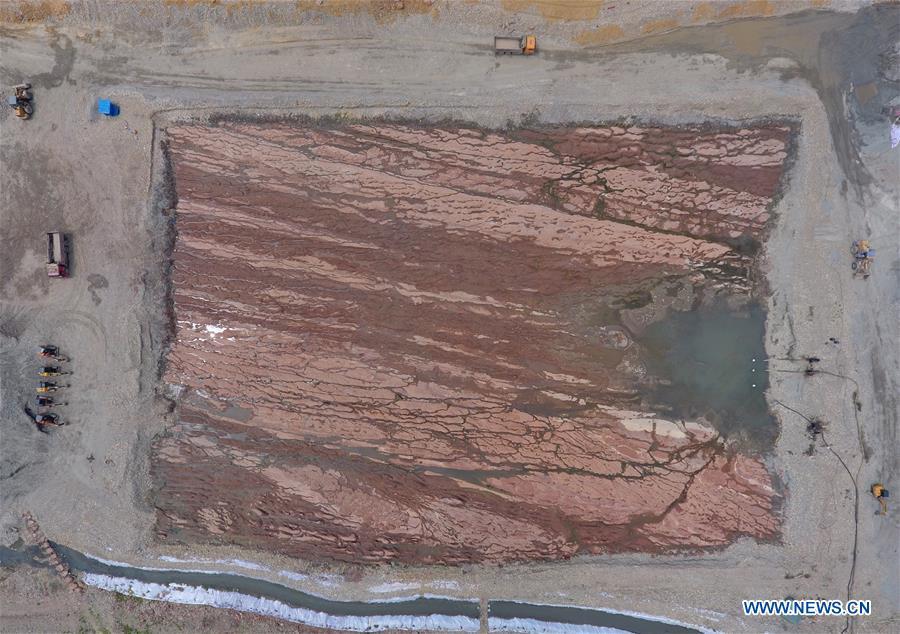
Aerial photo shows the excavation site of the Jiangkou stretch of the Minjiang River in Meishan City, southwest China's Sichuan Province, April 15, 2020. More than 10,000 relics, mainly gold and silver ware, have been excavated from the Jiangkou stretch of the Minjiang River, local authorities said on Wednesday. The site which dates back to the end of the Ming Dynasty (1368-1644) was listed as one of "China's top 10 archaeological discoveries in 2017". (Xinhua/Liu Kun)
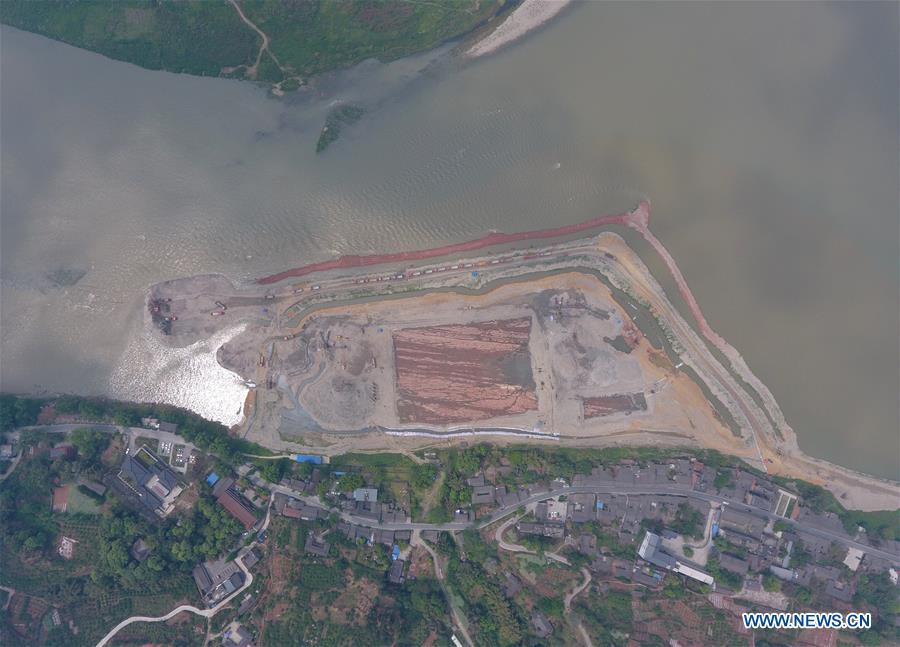
Aerial photo shows the excavation site of the Jiangkou stretch of the Minjiang River in Meishan City, southwest China's Sichuan Province, April 15, 2020. More than 10,000 relics, mainly gold and silver ware, have been excavated from the Jiangkou stretch of the Minjiang River, local authorities said on Wednesday. The site which dates back to the end of the Ming Dynasty (1368-1644) was listed as one of "China's top 10 archaeological discoveries in 2017". (Xinhua/Liu Kun)
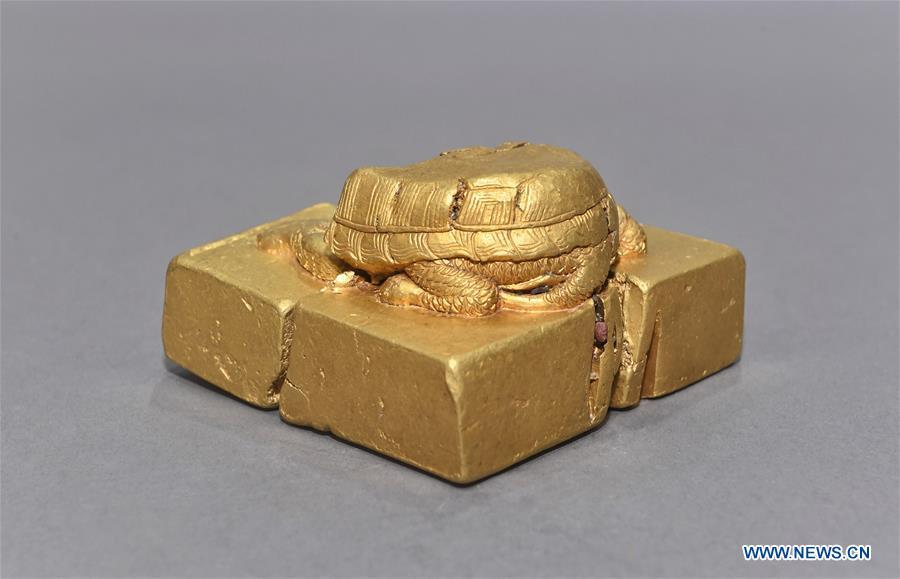
Photo taken on April 15, 2020 shows a golden seal excavated from the Jiangkou stretch of the Minjiang River in Meishan City, southwest China's Sichuan Province. More than 10,000 relics, mainly gold and silver ware, have been excavated from the Jiangkou stretch of the Minjiang River, local authorities said on Wednesday. The site which dates back to the end of the Ming Dynasty (1368-1644) was listed as one of "China's top 10 archaeological discoveries in 2017". (Xinhua/Liu Kun)
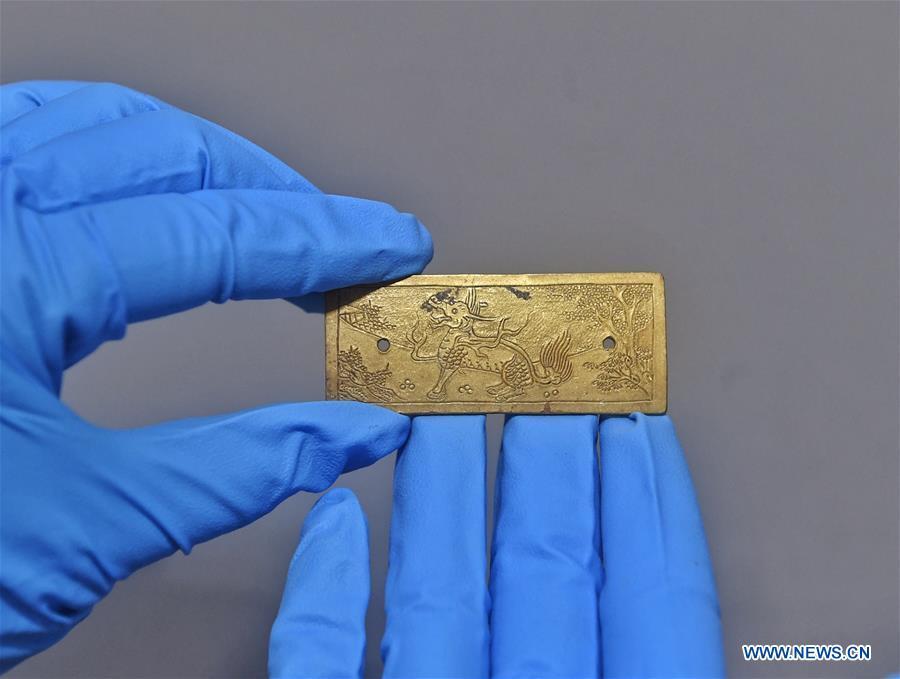
Photo taken on April 15, 2020 shows a golden ornament excavated from the Jiangkou stretch of the Minjiang River in Meishan City, southwest China's Sichuan Province. More than 10,000 relics, mainly gold and silver ware, have been excavated from the Jiangkou stretch of the Minjiang River, local authorities said on Wednesday. The site which dates back to the end of the Ming Dynasty (1368-1644) was listed as one of "China's top 10 archaeological discoveries in 2017". (Xinhua/Liu Kun)
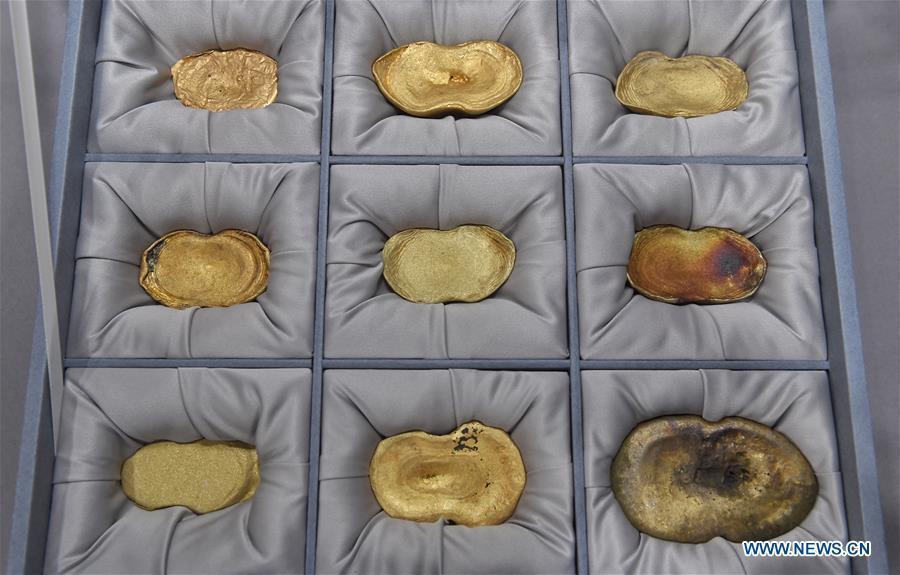
Photo taken on April 15, 2020 shows gold ingots excavated from the Jiangkou stretch of the Minjiang River in Meishan City, southwest China's Sichuan Province. More than 10,000 relics, mainly gold and silver ware, have been excavated from the Jiangkou stretch of the Minjiang River, local authorities said on Wednesday. The site which dates back to the end of the Ming Dynasty (1368-1644) was listed as one of "China's top 10 archaeological discoveries in 2017". (Xinhua/Liu Kun)
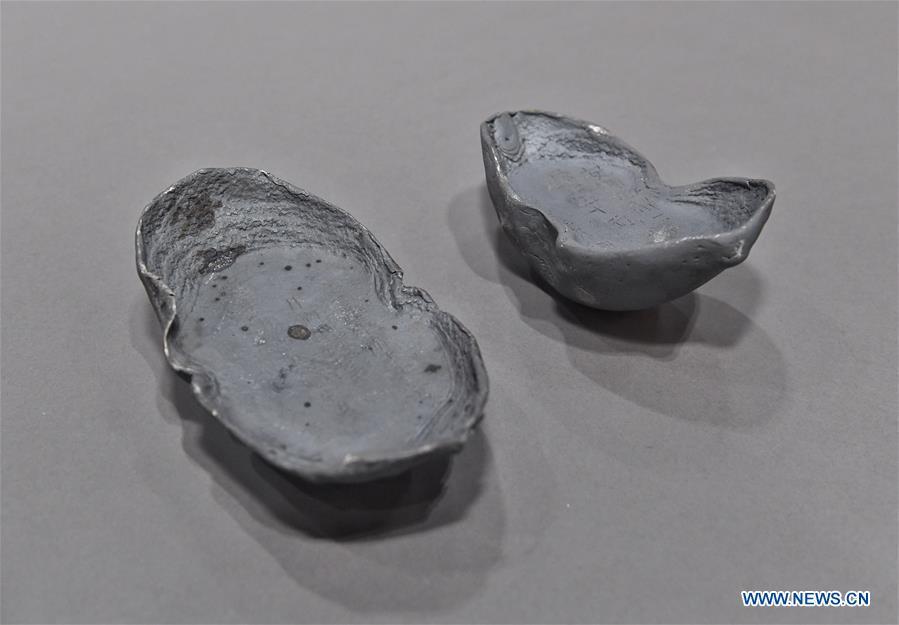
Photo taken on April 15, 2020 shows silver ingots excavated from the Jiangkou stretch of the Minjiang River in Meishan City, southwest China's Sichuan Province. More than 10,000 relics, mainly gold and silver ware, have been excavated from the Jiangkou stretch of the Minjiang River, local authorities said on Wednesday. The site which dates back to the end of the Ming Dynasty (1368-1644) was listed as one of "China's top 10 archaeological discoveries in 2017". (Xinhua/Liu Kun)
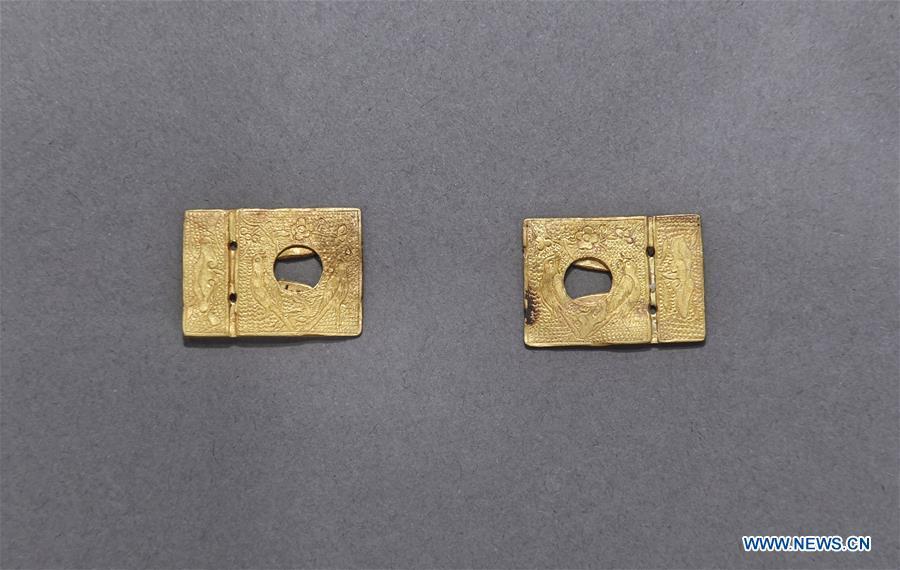
Photo taken on April 15, 2020 shows golden buttons excavated from the Jiangkou stretch of the Minjiang River in Meishan City, southwest China's Sichuan Province. More than 10,000 relics, mainly gold and silver ware, have been excavated from the Jiangkou stretch of the Minjiang River, local authorities said on Wednesday. The site which dates back to the end of the Ming Dynasty (1368-1644) was listed as one of "China's top 10 archaeological discoveries in 2017". (Xinhua/Liu Kun)

Photo taken on April 15, 2020 shows a golden ring excavated from the Jiangkou stretch of the Minjiang River in Meishan City, southwest China's Sichuan Province. More than 10,000 relics, mainly gold and silver ware, have been excavated from the Jiangkou stretch of the Minjiang River, local authorities said on Wednesday. The site which dates back to the end of the Ming Dynasty (1368-1644) was listed as one of "China's top 10 archaeological discoveries in 2017". (Xinhua/Liu Kun)
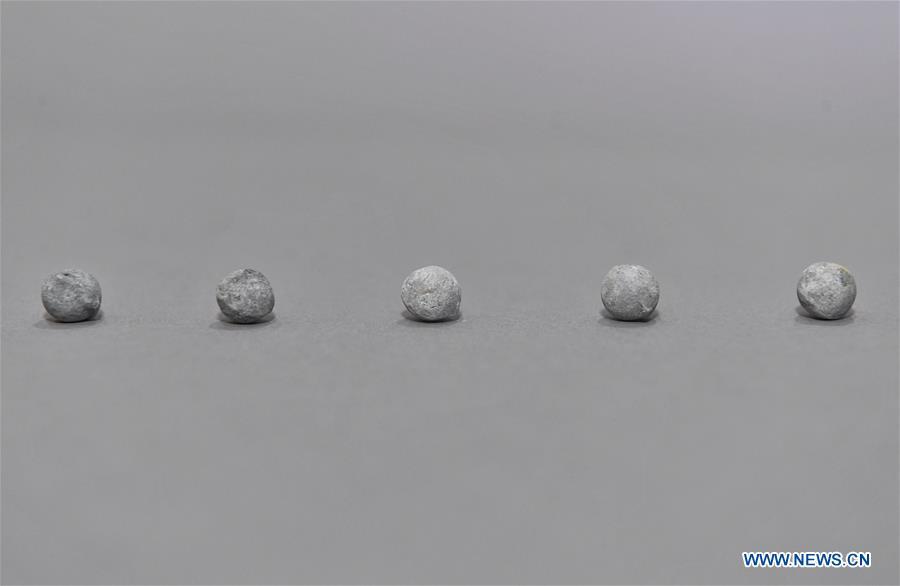
Photo taken on April 15, 2020 shows relics excavated from the Jiangkou stretch of the Minjiang River in Meishan City, southwest China's Sichuan Province. More than 10,000 relics, mainly gold and silver ware, have been excavated from the Jiangkou stretch of the Minjiang River, local authorities said on Wednesday. The site which dates back to the end of the Ming Dynasty (1368-1644) was listed as one of "China's top 10 archaeological discoveries in 2017". (Xinhua/Liu Kun)
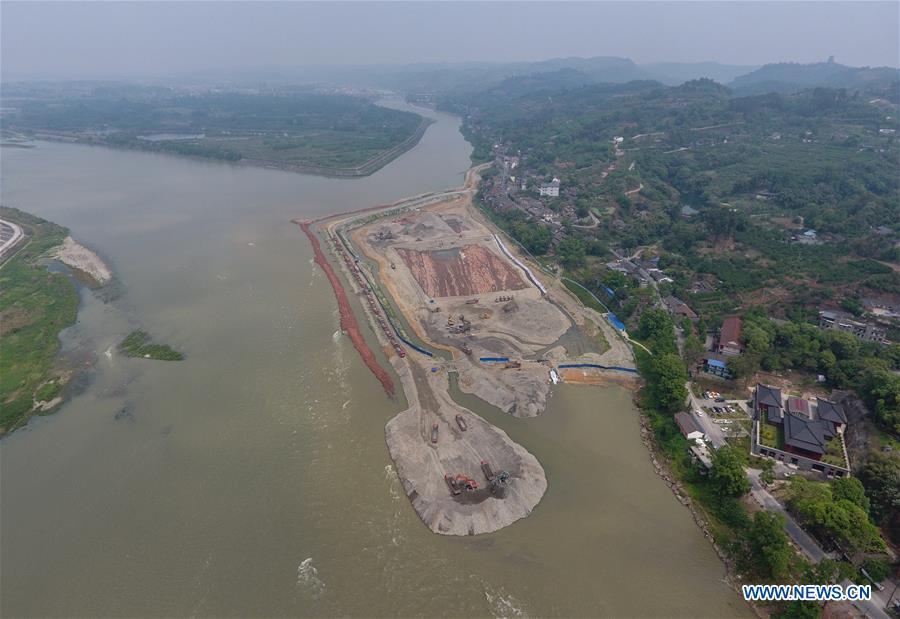
Aerial photo shows the excavation site of the Jiangkou stretch of the Minjiang River in Meishan City, southwest China's Sichuan Province, April 15, 2020. More than 10,000 relics, mainly gold and silver ware, have been excavated from the Jiangkou stretch of the Minjiang River, local authorities said on Wednesday. The site which dates back to the end of the Ming Dynasty (1368-1644) was listed as one of "China's top 10 archaeological discoveries in 2017". (Xinhua/Liu Kun)
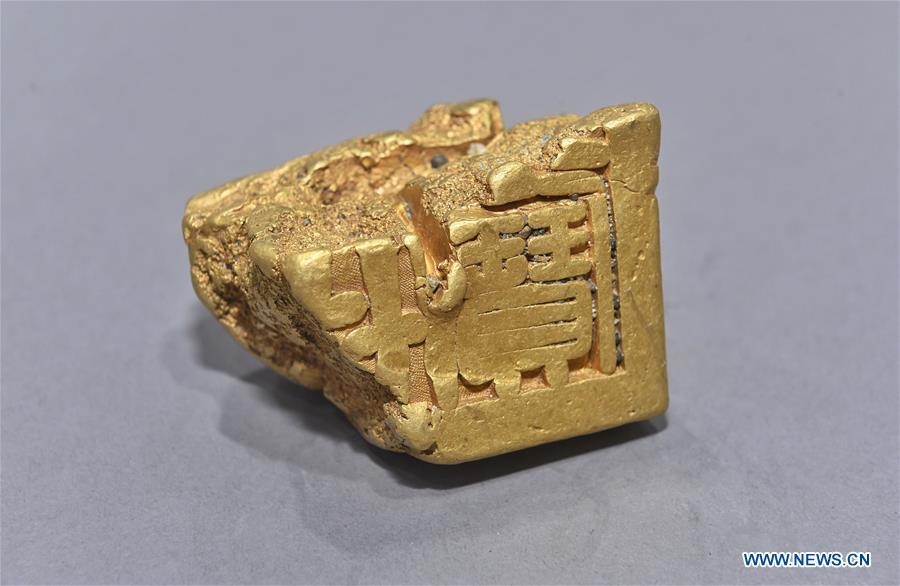
Photo taken on April 15, 2020 shows part of a golden seal excavated from the Jiangkou stretch of the Minjiang River in Meishan City, southwest China's Sichuan Province. More than 10,000 relics, mainly gold and silver ware, have been excavated from the Jiangkou stretch of the Minjiang River, local authorities said on Wednesday. The site which dates back to the end of the Ming Dynasty (1368-1644) was listed as one of "China's top 10 archaeological discoveries in 2017". (Xinhua/Liu Kun)
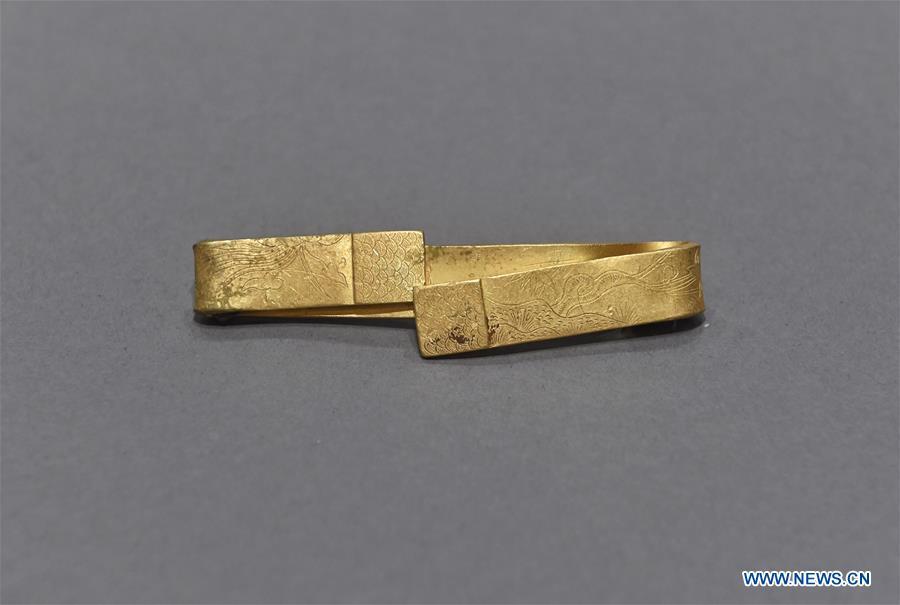
Photo taken on April 15, 2020 shows a golden bracelet excavated from the Jiangkou stretch of the Minjiang River in Meishan City, southwest China's Sichuan Province. More than 10,000 relics, mainly gold and silver ware, have been excavated from the Jiangkou stretch of the Minjiang River, local authorities said on Wednesday. The site which dates back to the end of the Ming Dynasty (1368-1644) was listed as one of "China's top 10 archaeological discoveries in 2017". (Xinhua/Liu Kun)

